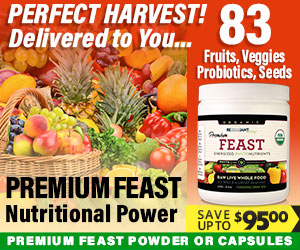- 1. Fresh Juicing with Organic Fruits and Vegetables
- 2. Sprouted Seeds and Legumes
- 3. Fermented Foods for Gut Health
- 4. Raw Nuts and Seeds
- 5. Spirulina and Other Supergreens
- 6. Microgreens and Young Greens
- 7. Raw Honey and Natural Syrups
- 8. Non-Dairy Fermented Drinks
- 9. Alkaline Vegetables
- 10. Unground Superfoods & Herbal Tonics
1. Fresh Juicing with Organic Fruits and Vegetables
The Power of Raw Juices in Nutrition
In 2025, fresh juicing remains one of the most popular ways to incorporate healthy live foods into your diet. Juicing organic fruits and vegetables allows you to access a concentrated burst of nutrients, enzymes, and antioxidants that are often lost during cooking and processing. This method provides a quick and effective way to boost your energy levels and support overall wellness.
When I started experimenting with juicing, I noticed immediate improvements in my energy and digestion. The key is using fresh, organic produce to avoid pesticides and maximize nutrient density. Consider including a variety of colorful vegetables like carrots, kale, and celery, along with fruits such as apples or berries to balance sweetness and nutrition.
Research shows that regularly consuming fresh juices can support detoxification, improve skin health, and enhance immune function. As we move further into 2025, the trend is towards cold-pressed, nutrient-preserving methods that retain maximum enzymes. Incorporate a glass of fresh juice into your morning routine for sustained energy throughout the day.
Practical Tips for Juicing Success
To get the best benefits from juicing, always choose organic produce whenever possible. Invest in a good-quality juicer that preserves enzymes and nutrients. Start with simple recipes and gradually explore more complex blends. Remember, moderation is keyâjuicing is a supplement, not a replacement for consumed whole foods.
For added health benefits, consider adding herbs like parsley, cilantro, or ginger to your juice. These can enhance detox pathways and provide additional antioxidants. Also, keep your juices fresh by drinking them immediately or storing in airtight containers for no more than 24 hours.
2. Sprouted Seeds and Legumes
Benefits of Sprouting for Enhanced Nutrition
Sprouted seeds and legumes are a cornerstone of healthy live foods in 2025. Sprouting unlocks nutrients that are otherwise dormant, increasing bioavailability and digestibility. Foods like alfalfa, mung beans, and broccoli sprouts pack a powerful nutritional punch, rich in vitamins, minerals, and enzymes.
The process of sprouting enhances the content of vitamins C, B-complex, and antioxidants, helping your body fight oxidative stress more effectively. Plus, sprouted foods are lower in anti-nutrients like phytic acid, which can hinder mineral absorption. Incorporating sprouted seeds into salads, sandwiches, or wraps is both easy and delicious.
I often include sprouted lentils in my smoothies or use sprouted alfalfa as a crunchy addition to salads. Scientific studies confirm that sprouted foods support immune health, improve digestion, and boost energy levels naturally. In 2025, sprouting at home continues to be a cost-effective way to enjoy fresh, nutrient-dense healthy live foods.
Simple Sprouting Tips
Start with organic, non-GMO seeds for sprouting. Rinse thoroughly and soak in water for 8-12 hours, then drain and rinse two or three times daily. Keep the sprouting jars in a well-ventilated, dark place, and within a few days, you’ll have fresh sprouts ready to enjoy.
Experiment with different seeds and legumes, and incorporate them into your daily meals for a sustained energy boost. Remember, sprouted foods are best consumed fresh, but proper storage in the refrigerator can extend freshness for a few days.
3. Fermented Foods for Gut Health
The Rise of Fermented Live Foods in 2025
Fermented foods continue to gain popularity as one of the most potent forms of healthy live foods in 2025. These foods, like sauerkraut, kimchi, and kefir, are rich in probiotics that promote a healthy gut microbiome. A balanced gut is crucial for overall wellness, affecting everything from immunity to mood.
Consuming fermented foods regularly can improve digestion, reduce bloating, and enhance nutrient absorption. My personal experience shows that adding small servings of fermented vegetables to meals can significantly improve energy levels and reduce cravings for processed foods.
Recent studies suggest that a diverse intake of fermented foods can lead to better mental health, stronger immune defenses, and increased vitalityâall key benefits in todayâs fast-paced world. As we advance into 2025, fermented foods are an easy, delicious way to support your health naturally.
How to Incorporate Fermented Foods
Start slowâintroduce small amounts of fermented foods into your diet daily. You can add sauerkraut or kimchi to salads, use kefir or yogurt as a base for smoothies, or enjoy homemade kombucha. Making your own fermented foods at home is simple with starter cultures and high-quality ingredients. This DIY approach ensures freshness and minimizes added sugars or preservatives.
Maintaining optimal fermentation conditionsâlike correct temperature and pHâwill ensure the probiotic content remains high. Remember to choose unpasteurized, live fermented products to maximize benefits.
4. Raw Nuts and Seeds
Nutritional Powerhouses for Natural Energy
Raw nuts and seeds are energy-dense healthy live foods that have gained recognition in 2025 for their numerous health benefits. Almonds, walnuts, chia seeds, and hemp seeds are excellent sources of healthy fats, protein, fiber, and essential micronutrients. They help sustain energy and improve cognitive function throughout the day.
Eating a handful of raw nuts or seeds as a snack keeps you full longer and stabilizes blood sugar levels. My favorite tip is to soak nuts overnight to reduce anti-nutrients, making their nutrients more bioavailable. This small step enhances digestion and energy extraction from these foods.
Recent nutritional studies highlight that incorporating raw nuts and seeds into your diet can lower inflammation, support heart health, and boost your mental clarity. They are convenient, portable, and versatile, making them a staple in any healthy live foods plan in 2025.
Creative Ways to Enjoy Raw Nuts and Seeds
Sprinkle them over salads, oatmeal, or yogurt. Incorporate them into energy balls, smoothies, or homemade granola. Toast lightly for added flavor without losing nutritional value. Keep portions moderate, as nuts are calorie-dense.
Choose raw, organic options whenever possible to maximize health benefits. Including a variety of nuts and seeds enhances your nutrient intake and supports sustained energy levels.
5. Spirulina and Other Supergreens
Superfoods for Immune and Energy Support
In the realm of healthy live foods, supergreens like spirulina, chlorella, and moringa play a vital role in boosting health in 2025. Spirulina, a blue-green algae, is considered a complete protein, rich in B vitamins, iron, and antioxidantsâall vital for energy production and detoxification.
I regularly add spirulina powder to smoothies or sprinkle it over salads. Its high nutrient density means even small amounts can make a big difference in vitality and immune resilience. Scientific research supports its role in reducing inflammation and supporting mitochondrial health, which are crucial for sustained energy.
As trends in 2025 favor sustainable and nutrient-dense foods, incorporating supergreens like spirulina is a simple way to enhance your intake of healthy live foods and improve overall wellness.
How to Use Spirulina and Supergreens
Add powdered supergreens to your morning smoothie, or mix into water or herbal teas. Liquid extracts and capsules are also available for convenience. Be mindful to start with small doses to assess your tolerance, especially if you’re new to these superfoods.
Choose high-quality, organic supergreens to ensure maximum potency and safety. Regular consumption can support energy, detoxification, and immune healthâkey outcomes in a comprehensive healthy live foods plan for 2025.
6. Microgreens and Young Greens
The Nutritional Edge of Microgreens
Microgreens are young vegetable greens harvested just after sproutingâtiny superfoods packed with nutrients. They are among the most concentrated sources of vitamins, minerals, and antioxidants in the realm of healthy live foods in 2025. Their vibrant colors and flavors make them a visual and nutritional delight.
Adding microgreens like radish, sunflower, or basil to salads, sandwiches, or smoothies can significantly boost your nutrient intake. Studies show microgreens contain up to 40 times more nutrients per weight than mature vegetables, making them an efficient way to improve vitality.
Huge Discount on the Best Certified Organic Nutrient Dense Supplement!
My go-to is growing microgreens at home; itâs simple, cost-effective, and provides fresh greens year-round. They serve as a quick energy booster and support overall metabolic healthâcrucial benefits in todayâs health-conscious society.
How to Grow and Use Microgreens
Growing microgreens involves planting seeds in shallow trays, watering regularly, and harvesting within 7-14 days. Use organic seeds for the best nutritional outcomes. Incorporate microgreens into salads, wraps, and smoothies for a powerful nutrient punch.
Experiment with different varieties to diversify your intake of phytonutrients. Small, easy, and nutrient-packedâthe microgreens are truly a game-changer in the healthy live foods movement of 2025.
7. Raw Honey and Natural Syrups
Sweeteners with Live Enzymes
In 2025, raw honey and natural syrups like maple or date syrup are recognized as healthy live foods that offer more than just sweetness. These natural sweeteners contain live enzymes that support digestion and immune function. Unlike processed sugars, they retain beneficial bioactive compounds.
I love using raw honey as a natural energy booster and throat soother. Itâs especially beneficial in balanced, small doses. Raw honey has been shown to contain antioxidants and antimicrobial properties that can support your wellness routine.
Incorporating natural syrups into your diet can satisfy sweet cravings while nourishing your body. They are excellent in teas, dressings, or spread on toast, providing a healthy alternative to refined sugars.
Practical Tips for Using Natural Syrups
Choose unfiltered, raw options for maximum benefits. Use sparinglyâsmall amounts go a long way. Combine with cinnamon, ginger, or lemon to enhance flavors and health benefits.
Experiment with homemade energy bars, smoothies, or salad dressings using natural syrups, aligning with your goal to include more healthy live foods in 2025.
8. Non-Dairy Fermented Drinks
Probiotic Beverages for Optimal Gut Health
Non-dairy fermented drinks like water kefir and jun are trending in 2025 for their gut-boosting benefits. They are rich in probiotics, which help balance gut bacteria, improve digestion, and enhance immune functionâessential aspects of wellness today.
I started drinking water kefir regularly, and Iâve noticed a marked improvement in my digestion and energy levels. These beverages are easy to make at home, and you can customize flavors with herbs or fruit juices.
Research from 2025 indicates that incorporating probiotic-rich drinks can reduce inflammation, support mental clarity, and sustain energyâfoundational elements of a vibrant, healthy lifestyle.
DIY Fermented Drinks Tips
You can ferment water kefir grains or jun using sugar or honey and mineral water. Allow fermentation at room temperature for 24-48 hours, then refrigerate. Use within a week for optimal probiotic content.
Keep flavoring simple initially, then experiment with berries, citrus, or herbs for variety. These nutrient-dense drinks are an excellent addition to your healthy live foods plan for 2025.
9. Alkaline Vegetables
Balancing pH with Live, Greens-rich Vegetables
Alkaline vegetables like cucumber, celery, and zucchini are fundamental to a healthy diet in 2025. They help balance body pH, reduce acidity, and support optimal cellular function. Consuming alkaline vegetables is associated with increased energy and reduced inflammation, vital benefits in todayâs health landscape.
Personally, I include these vegetables in smoothies, salads, and as snacks to maintain vitality. Their high water and mineral content make them hydrating and energizing, supporting detox and digestion.
Recent health trends emphasize the importance of foods that promote alkalinity, helping us sustain high energy levels and overall wellness in 2025’s dynamic environment.
How to Maximize Benefits from Alkaline Vegetables
Buy organic and raw or lightly cooked to preserve nutrients. Juicing or blending retains their alkalizing effect and makes absorption easier. Add herbs and lemon juice for flavor and additional benefits.
Eat a variety of these vegetables daily, aiming for at least 3-5 servings to support your body’s natural balance and boost energy levels naturally.
10. Unground Superfoods & Herbal Tonics
Powerful Herbal Tonics for Vitality
In 2025, herbal tonics made from ungound superfoods like dried roots, herbs, and medicinal mushrooms are gaining popularity for their holistic benefits. These tonics support energy, immunity, and mental clarityâkey components of overall wellness.
Personally, I brew herbal teas and elixirs with ingredients like reishi mushrooms, ashwagandha, or holy basil. These natural superfoods provide adaptogenic benefits, helping the body adapt to stress and maintain vitality.
Research highlights that integrating herbal tonics into daily routines can improve sleep, enhance focus, and sustain energy levels naturallyâall hallmarks of healthy live foods in 2025.
Making Your Own Herbal Tonics
Steep dried herbs or medicinal mushrooms in hot water for 15-20 minutes, then enjoy. Use organic, high-quality ingredients for maximum benefits. Experiment with flavorings like ginger and lemon to enhance taste.
These tonics can be consumed daily, supporting your bodyâs natural energy production and immune defenses, fitting perfectly into a holistic healthy live foods approach for 2025.
Conclusion: Embrace Healthy Live Foods for Optimal Energy & Wellness in 2025
In summary, integrating these 10 powerful healthy live foods into your lifestyle can dramatically improve your energy, immunity, and overall wellness in 2025. As research continues to evolve, the focus remains on whole, natural, and minimally processed foods packed with enzymes, probiotics, and essential nutrients. Whether through fresh juices, sprouted seeds, fermented drinks, or herbal tonics, making intentional food choices is key to thriving in todayâs vibrant health landscape.
Remember, the foundation of a balanced, energized life in 2025 starts with prioritizing healthy live foods. Start small, be consistent, and enjoy the journey toward a healthier you!
Frequently Asked Questions
1. What are healthy live foods?
Healthy live foods are minimally processed, nutrient-dense foods such as fermented foods, sprouted seeds, fresh vegetables, and raw nuts that contain active enzymes, probiotics, and bioavailable nutrients supporting overall health.
2. How can I incorporate healthy live foods into my daily routine?
Start with simple steps





